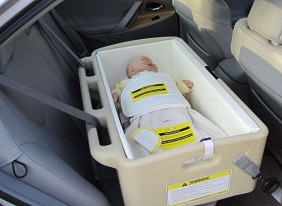Blog Roll: (Contributors)
» Hulet Smith, OT
» Megan Smith, PT
» Mike Price, OT
Topics:
Adaptive Devices
Adult Tricycles
Air Purifier
Allergy
Alternative Communication Devices
Alzheimer's Dementia Products
Aquatic Products
Arthritis Relief Products
Autism
Back Relief
Ball Pit/Pool
Bariatric
Bath Benches
Bathtub Lift
Bed Rails
Bedsores / Decubitus
Bidet
Body Solid Exercise Products
Breast Feeding Products
Bushel Trucks
Cancer
Catheters
CEU
Changing Bench
Child Car Seats
Child Care Products
Christmas Gifts
Clinic/Medical Equipment
Clinical Furniture
Cold and Flu
Communication Devices
Compression Garments
Computer Products
CPAP
Crutches
Daily Assistance Products
Daylight Lamps
Dental Care
Diabetes
Doctor's Office
Dysphagia
Electrodes
Electrolarynx
Emergency Preparedness
Ergonomic Equipment
Exam Tables
Exercise Products
Eyecare
Family Tricycles
First Aid Kits
Floor Scales
Fluidotherapy
Foot Drop
Foul Weather Gear
Furniture
Gait Trainers
General Articles
General Posts
Glassless Mirrors
Hand Sanitizer
Head Protection Helmets
Hearing Impaired
Heart Health
Heating Pad
Hip Fractures
Home Assistance Products
Home/Office Assistance
Hospital Beds
Hoyer Lifts
Hyperbaric chamber
Hyperthermia/Hypothermia
Ice/Hydration Carts
Impotence Products
Incontinence Products
Infection Control Gowns
Inspirational Stories
Lift Chairs
Light Therapy
Low Vision Products
Massage Tables & Chairs
Massage Units
Maternity
Medical Facility Products
Medical Scales
Multi-Sensory Environment
Natural Healing
Nebulizers
Non-Hospital Bedding
Nutritional Supplements
Office Furniture
One-Handed Products
Operating Room Devices
Ostomy Products
Oxygen Compressors
Oxygen Concentrator
Oxygen/Nebulizer Masks
Pain Relief
Paraffin Unit
Patient Lift
Patient Lifts
Patient Restraints
Patient Transfer Systems
Pediatric Bath Chairs
Pediatric Furniture
Pediatric Learning
Pediatric Recreation
Personal Listening Devices
Personal Warming Products
Physical Therapy
Pill Organizers
Pillows
Playground Equipment
Pool Lifts
Press Releases
Procedure Chairs
Pulse Oximeter
Reading Assistance
Reference Materials
Rehab Equipment
Rehabmart News
Rehabmart Newsletter
Respiratory Health
Rollators
Saunas
Scooters
Seniors
Shower Chairs
Shower Commode Chairs
Shower Gurney
Showers Chairs
Side Access Bathtubs
Skin Tear
Special Needs Dinnerware
Special Needs Seating
Special Report Articles
Splints
Sport Injuries
Standers
Staying Home
Stethoscopes
Stimulus Reward Toys
Stress Relief
Stroke
Strollers
Summertime Products and Summertime Fun
Talking Products
Therapy Balls
TheraTogs
Thermometers
Traction Devices & Tables
Treatment Tables
Ultrasound
Vibroacoustic Therapy
Vision Products
Walk-In Bathtub
Walking Aids
Walking Boot
Weighted Wearables
Wheelchair Accessories
Wheelchair Cushions
Wheelchair Lifts
Wheelchair Ramps
Wheelchair Transfer Systems
Wheelchairs
Women's Health
Work Hardening Products
Wound Care
When Traveling in a Car, Keep Special Needs Infants Safe with the Hope Care Bed
Protecting our precious children is the ultimate responsibility of every parent. All children need a car seat of some sort to keep them safe while traveling by car, and the appropriate restraint system is determined by their height, weight, and development. Some children who are recovering from a procedure/operation, or who have certain medical conditions such as apnea, autism, Down syndrome, cerebral palsy, or premature infants require special consideration when selecting a specialized restraint system. One that will address each child's specific needs while providing optimum protection.
The American Academy of Pediatrics (AAP) recommends that babies born earlier than 37 weeks have a car seat test conducted by hospital staff, with this testing done as well for babies with special needs who cannot sit in the semi-reclined position that a traditional rear-facing car seat requires. If your hospital tells you that your baby needs a car bed, it is due to concerns about your baby's breathing, heart rate, and/or positioning needs due to recent procedures or connected living aids like a home monitor or IV. Car beds allow children to fully recline while traveling without compromising their safety or aggravating their medical conditions. Car beds are placed in the backseat with your baby's head in the center of the vehicle.

The Hope Car Bed is specifically designed for the best transport possible of special needs infants up to 35 pounds, and is currently the most adaptive car bed available to the public. It can be used for a single child or hospital use as it offers five different restraint/positioning options to fulfill all requirements as the children's needs change.The different restraining options include the supine position-laying on their back, the prone position- laying on their stomach, or the side-facing position with several cummerbund, restraint bag, and 3 point harness variations. The hospital staff will determine the safest position and type of restraint to be used depending on your child's current needs, and your pediatrician will reevaluate as necessary thereafter.
The Hope Car Bed is also the largest car bed available, maximizing superior comfort and safety and includes many standard features like the 3-point harness, neck pads and head protection, small restraint bag, adjustable cummerbund, and a medical tube guide to ensure that any connections stay securely attached to the child. Made of durable plastic, the Hope Car Bed weighs only 22 pounds and installs within minutes, making it ideal even if changing cars frequently is necessary. It additionally offers a special restraint bag option for a child with an omphalocele, and is also available in an adapted version for babies in hip casts.
While the Hope Car Bed is by far the best restraint system for special needs babies, taking other safety precautions will help you fully protect that precious cargo. Make sure to secure any breathing monitor or other portable medical equipment properly to prevent it from moving if a crash should occur, and limit the length of car rides. If your baby has a monitor, have enough battery power for at least twice the expected length of your travel. Wedge anything in the backseat under the seat, or better yet, in the trunk. With the Hope Car Bed, you can drive with peace of mind, knowing that your child is secured, safe and comfortable.
Alyssa Aldana,
Medical Consumer Writer
and
Hulet Smith, OT
Rehabmart Team Leader & CEO
